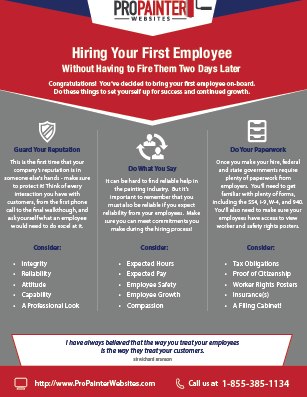Key Seasonal Considerations For Commercial Outside Paint: What You Need To Be Informed About
Key Seasonal Considerations For Commercial Outside Paint: What You Need To Be Informed About
Blog Article
Post By-Korsholm Rosendal
When you're planning a commercial outside painting job, seasonal aspects can make or break your outcomes. You'll wish to consider how temperature level and moisture effect paint application and drying out times. Choosing the right season can ensure your paint sticks effectively and lasts longer. But which periods are truly the best for this sort of job? Allow's discover the crucial elements that can influence your project's success.
The Impact of Temperature Level on Paint Application
When you're planning an industrial external paint task, the temperature can dramatically affect exactly how well the paint sticks and dries out.
Ideally, you want to paint when temperature levels vary between 50 ° F and 85 ° F. If it's also cool, the paint may not cure properly, leading to issues like peeling or breaking.
On the other side, if it's too warm, the paint can dry out too rapidly, protecting against proper adhesion and leading to an uneven coating.
You ought to likewise take into consideration the moment of day; morning or late afternoon offers cooler temperatures, which can be more favorable.
Always check the maker's suggestions for the specific paint you're utilizing, as they commonly provide assistance on the suitable temperature variety for optimum results.
Moisture and Its Effect on Drying Times
Temperature level isn't the only environmental factor that affects your commercial exterior paint project; humidity plays a significant duty as well. High moisture levels can reduce drying out times considerably, impacting the overall top quality of your paint job.
When the air is filled with wetness, the paint takes longer to cure, which can result in concerns like inadequate attachment and a higher danger of mold growth. If you're painting on a specifically moist day, be gotten ready for prolonged delay times in between coats.
It's important to check local climate condition and strategy appropriately. Preferably, go for commercial painting contractor saint paul in between 40% and 70% for optimal drying out.
Maintaining these factors in mind ensures your job stays on track and supplies a lasting finish.
Best Seasons for Commercial Exterior Paint Projects
What's the best time of year for your commercial external paint jobs?
Spring and very early autumn are typically your best options. Throughout website link , temperatures are mild, and moisture levels are commonly lower, producing perfect problems for paint application and drying out.
Stay https://exterior-house-painters-n98775.blogscribble.com/34406733/home-painters-the-essential-element-for-a-bright-inviting-and-rejuvenated-living-room of summertime's intense heat, which can cause paint to completely dry also swiftly, resulting in bad attachment and surface. Likewise, wintertime's cold temperature levels can prevent appropriate drying out and curing, running the risk of the long life of your paint job.
Go for days with temperatures in between 50 ° F and 85 ° F for optimum results. painting contractors minneapolis in mind to inspect the regional weather report for rainfall, as damp problems can spoil your task.
Planning around these aspects ensures your painting task runs smoothly and lasts longer.
Verdict
Finally, planning your commercial outside painting jobs around seasonal factors to consider can make a significant difference in the result. By organizing work throughout the perfect temperatures and moisture levels, you'll guarantee much better attachment and drying out times. Keep in mind to keep an eye on local weather prediction and pick the correct time of year-- springtime and early fall are your best bets. Taking these steps will help you achieve a sturdy and professional surface that lasts.
